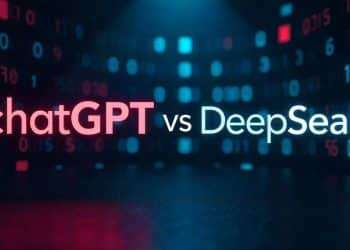In the education sector that is continuously changing, technology is needed for students to have a better learning experience. Blackboard is a really good educational device. It is a multi-functional and flexible platform. It was specifically designed for meeting the multifaceted requirements of both educators and learners.
This potent learning management system (LMS) has transformed the way we do education by making it more flexible. It combines the traditional and digital methodologies into a single experience. In this article, we will provide insights into what Blackboard is, its main features, and how it has affected the educational environment.

Table of Contents
What is Blackboard?
Blackboard represents a sophisticated learning management system (LMS). It is a robust platform for teachers to build, manage, and deliver the course content. It is popular in many educational institutions throughout the world where it is mainly used by universities, colleges, and K-12 schools. The platform has become an enabler of a lively and interactive learning process. There is a wide array of tools and features at teachers’ and students’ disposal. These solutions satisfy instructors’ and learners’ needs.
Key Features of Blackboard
Course Management
The course management component of Blackboard is comprised of among other elements its very professional course management capabilities. The teachers are capable of creating and arranging various contents such as lecture notes, assignments, quizzes, and multimedia sources with great simplicity.
Furthermore, the platform supports many file formats including music clips, pictures, videos, and the like which for users are the easiest to upload and share. Also, the teachers can alter the course layout and structure as per their teaching pattern and objectives.
Interactive Learning Tools
Interactive learning tools are at the core of Blackboard’s technology which transforms a usual, text-based learning platform into one that is more student-engaged and interactive. Some of these digital tools are discussion boards, blogs, wikis, and virtual classrooms.
Discussion boards are asynchronous and enable learners to partake in meaningful discussions at their own preferred time. In contrast, virtual classrooms allow real-time interaction through video conferencing, and thus, the students can attend live lectures, do group work, and receive instant feedback.
Assessment and Grading
Assessment and grading are the two main concerns of the educational process. By far, Blackboard boasts expertise in this regard. The platform provides different assessment tools including quizzes, tests, assignments, and surveys. Teachers can construct custom assessments, as well as, set deadlines and provide individualized feedback to students.
The gradebook feature is a timesaving tool for easy tracking and management of student performance. It is also a more transparent and efficient way to assess progress.

Analytics and Reporting
Data-driven decision-making is a crucial aspect of education, and Blackboard allows for data-driven decision-making by providing robust analytics and reporting capabilities. Instructors can track student engagement, performance, and attendance and get relevant reports. They can use this information to pinpoint areas where students may be having difficulty and improve their teaching methods. On the other hand, the administrators can also take advantage of these analytics to check the overall institutional performance and make informed decisions.
Mobile Accessibility
In today’s busy society, mobile accessibility becomes more and more necessary. Blackboard mobile apps guarantee that students and teachers can read courses anytime and communicate with each other, no matter where, no matter when. This app is recommended for both Android and Apple gadgets, thus making learning on the move easy and smooth. Notices and alarms maintain the subscribers updated about key notifications, expiry dates, and announcements.
Customization and Integration
Blackboard gives a great range of customization and integration with the best tools and platforms of education. Educators are privileged to be able to modify the framework to meet the needs, they particularly require, by adding various components that will build their brand, be it themes or modules. Blackboard also supports the integration with third-party applications.
These are plagiarism detection software, video conferencing tools, and library resources. This will obviously improve the overall functionality and user experience.
How Blackboard is Transforming Education
Enhanced Accessibility
One nice thing about Blackboard is that it can enhance accessibility.The platform makes distance irrelevant to students as the students studying in different places can still access education that is of good quality. This is especially good for online programs and multicultural schools. All of the students can access the content, and their success can be found for schools that use Blackboard as a mobile device. With its mobile accessibility, students can be part of the class no matter how well they know technology.
Improved Collaboration and Engagement
Blackboard has been identified as being capable of creating a cooperative learning atmosphere that fosters student involvement and engagement. Interactive tools like discussion boards and virtual classrooms aid in facilitating a productive exchange of viewpoints between students and instructors. By this way of educational setting, the creativity of the students in learning is enhanced and also the skills of thinking, communication and teamwork are sharpened.
Streamlined Administrative Processes
Also, it can be seen that Blackboard is an instrument to streamline the work amongst educators and administrative staff as it eats the lion’s share of the work. Centralized course management is an effective technique that the platform includes making the process of course creation, organization, and delivery cast clear and easy.
Teachers and staff and relieved from monotonous tasks thanks to the automated grading and reporting. This way, teachers can only focus on their work of imparting knowledge and students could get more support.

Data-Driven Decision Making
The data analysis and reporting options available in Blackboard’s interface enable educators and administrators to implement data-driven decision-making. A thorough and in-depth analysis of a student’s work and engagement enables an instructor to find areas of a subject where marks are to be improved as well as to organize targeted interventions.
All the analytics that are obtained from the system can be used by school authorities to address program efficiency, allocate resources install new technology thus to ensure school performance is rated high.
Conclusion
Blackboard really changes the face of the landscape during the educational experiences of students. It is a tool that offers a complete and versatile platform. It is a platform that meets different educational needs of both the educators and the students.
Its strong tools for this purpose include the course management tool, interactive learning tools, assessment and grading, analytics, mobile accessibility, etc. The fact that Blackboard makes teaching materials more accessible, improves interaction among students, streamlines administrative processes, and generally supports school learning is its main benefit. Mastering Netflix
What is Blackboard and how does it work?

Blackboard Learn (previously the Blackboard Learning Management System) is a member of the Anthology group and a cloud-based Learning Management System (LMS).














